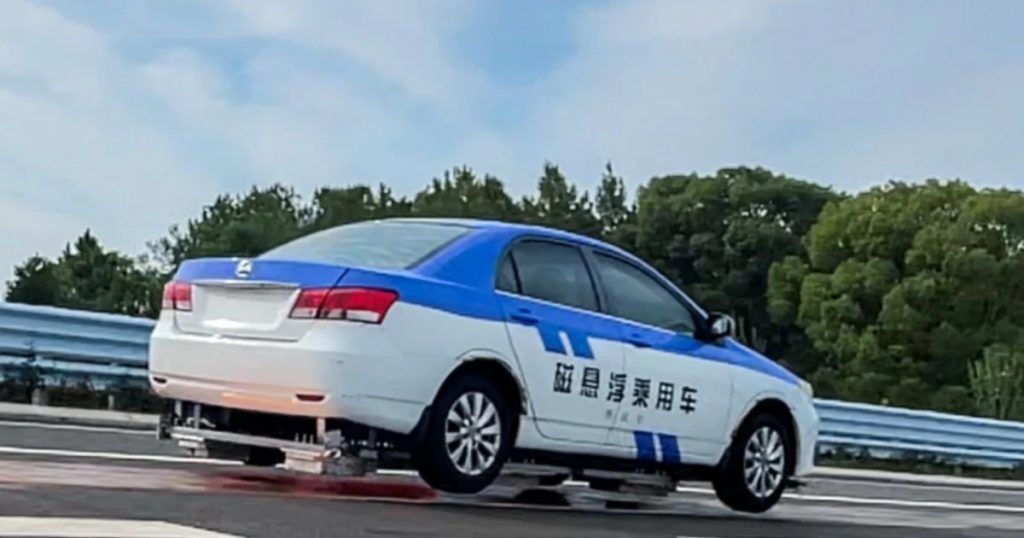Flying Car Via Magnet That Can Overcome Range Anxiety In Electric Car

If you've ever imagined a future full of flying cars, your dreams are probably a little closer to reality.
Chinese researchers at Southwest Jiaotong University in Chengdu, Sichuan province, last week conducted road tests of a modified passenger flying car via magnets to float 35mm above conductor rails, according to China's state news agency Xinhua.
The researchers outfitted the sedans with powerful magnets on the floor of the car, allowing them to levitate on conductive rails nearly 5 miles long. A total of eight cars were tested, with one reaching a speed of about 143 miles per hour, according to the report.
Xinhua said the tests were conducted by the government's transportation department to study safety measures for high-speed driving. But Deng Zigang, one of the university professors who developed the vehicles, told the state news agency that using magnetic levitation for passenger cars has the potential to reduce energy use and increase the vehicle's range.
This could help address “range anxiety” in the EV industry, or when consumers worry that they won't be able to complete an EV trip without running out of power.
Since the 1980s, some commercial trains have used magnet, or “maglev,” — which involves energizing a magnetic field to push or pull the vehicle at high speeds. China, Japan and South Korea all use maglev trains today. Last year, China launched a maglev bullet train in Qingdao, Shandong province, with a top speed of 373 miles per hour.
In theory, due to the lack of friction, maglev technology allows high speeds without using as much energy as conventional engine power. Elon Musk‘s The Boring Company and Richard Branson‘s Virgin Hyperloop One have already proposed the technology for hyperloop projects. Researchers have been exploring the potential of maglev cars for more than a decade, and Volkswagen designed a hovering car concept in 2012.
But potential security issues still need to be addressed. For example, what would happen if a car traveling at high speed veered off track, or was knocked off track by a non-magnetic vehicle? There's also a very difficult infrastructure problem out that building a nationwide network of electromagnetic highways could take years and would require substantial public investment in any country according to AutomoBlog.
These challenges may be worth overcoming: According to a 2018 LinkedIn post by George Sassine, vice president of the New York State Energy Research and Development Authority, the “magnet age” could revolutionize the energy industry and help combat climate change.
“While this may sound like science fiction, it could very well be our everyday life 50 years from now,” he wrote.

